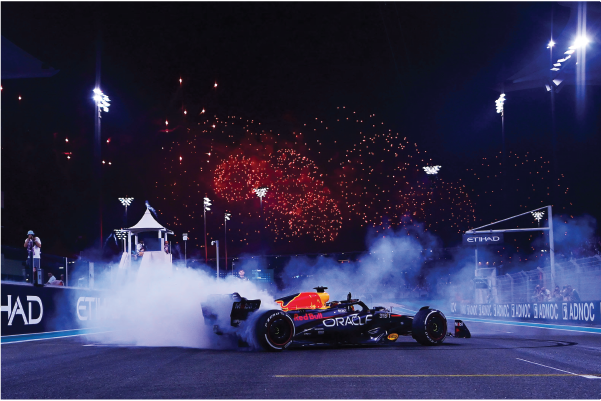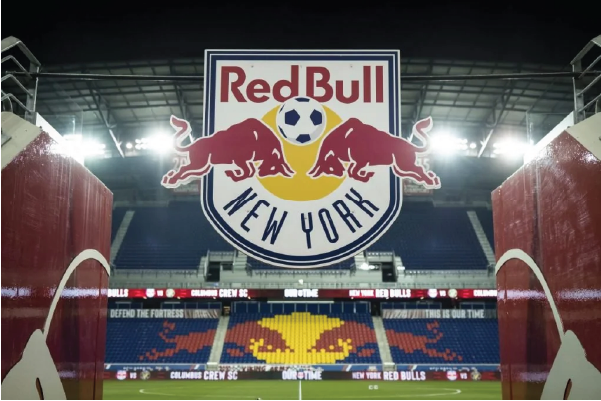
How Red Bull's Unique Marketing Strategy Powers Its Global Success
How Red Bull uses sports to boost sales
Intro & History
In 2019, Red Bull sold one can for almost every person on the planet.
But besides selling 7.5 billion cans of a very sweet drink, they also run two Formula One teams, five professional football clubs, and one ice hockey team.
Not to mention events like the Crashed Ice Challenge or the Wings for Life Run, and the thousands of athletes Red Bull sponsors, along with the media production they run.
Obviously, Red Bull does much more than selling an energy drink.
But is all that just marketing?
So, how does Red Bull make money?
It was the summer of 1982. Austrian businessman Dietrich Mateschitz was suffering from jet lag during a business trip to Thailand.
He tried a local drink called Krating Daeng, and it worked wonders for his jet lag. ✨
Krating Daeng means Red Gaur, which is basically a massive bison from Southeast Asia 🦬—so, yeah, Red Bull!
Mateschitz was so impressed, he decided to bring it home and create something brand new: the energy drink. 💥
He pitched it to Western investors, but they weren’t sold.
They couldn’t see anyone outside of Asia wanting it.
Mateschitz knew there wasn’t a market... yet.
👉 So, he decided to create one.
He was so convinced of his product that he invested half a million dollars himself.
He teamed up with the boss of Krating Daeng, who invested the other half a million for 50% of the company.
Mateschitz then adapted the formula and flavor for the European market and launched the product in Austria in 1987.
Since the drink was initially banned in Germany, Red Bull gained a reputation as an outlaw brand.
😳 Young Germans crossed the border to Austria just to buy the banned energy drink, and Red Bull sold over a million cans in its first year.
From Austria, it quickly spread across Europe, first to Slovakia and Hungary in 1992, and then to Germany and the UK in ’94.
By the time they entered the US market in 1997, Red Bull was selling over a million cans every day.
Sales & Marketing
#The marketing strategies behind Red Bull’s success
Soft drink giants like Coke and Pepsi had deeper pockets, but they underestimated the strategic intent of Mateschitz and his upcoming brand.
He created a new type of corporation that focuses purely on the downstream activities of the value chain, while outsourcing operations like production and logistics.
In simple terms, Red Bull doesn’t actually produce the drink. 🥤
Production and filling of the cans are completely outsourced, so Red Bull can commit all its resources to selling the drink.
And looking at their profit margins, that strategy pays off.
One of Red Bull’s secrets to success is its ability to charge much higher prices than competitors. Red Bull makes each can for approximately 9 cents, while customers pay anywhere from $1.87 to $3.59 per can. That’s over 20 times the cost of production.
Why are people willing to pay so much for sugar in a can?
Well, It’s about the brand which is part of a well-thought-out marketing strategy.
To create a market for his product, Mateschitz first targeted the club scene.
It’s almost impossible to imagine a student party without Red Bull.
The company cleverly used “student brand managers,” who were popular university students encouraged to promote Red Bull on campuses and throw parties sponsored entirely by the brand.
Then came the iconic Red Bull Beetles – cars with massive Red Bull cans strapped to the back – handing out free samples at beaches, colleges, gyms, and even office buildings.
Bartenders quickly realized that Red Bull was a money machine, especially when mixed with alcohol. Ever tried a Red Bull mixed with vodka or Jägermeister? These became two of the most popular drinks in bars everywhere, and Red Bull cemented itself in the nightlife scene.
😎 But this was just the beginning.😎
The Red Bull Marketing Machine

#Red Bull’s business model and profit margins
Red Bull doesn’t just tell stories; they create them.
The company doesn’t bother with conventional marketing – they’re all about story-performing.
Red Bull always engages with customers on completely different level.
Sports sponsorships and ownership of teams is a huge part of it.
When someone drinks Red Bull, they’re not just drinking an energy drink.
They’re connecting with the thrill
😳 of extreme sports
😳 the intensity of Formula 1 racing
😳 the daring feats of skateboarders and skydivers.
Red Bull also owns its media house, they create and own the content from all their events.
With social media, this generates viral content which totally improves the return on their marketing investments.
One of the best examples of Red Bull’s story-performing is Felix Baumgartner’s jump from the edge of space in 2012. The project cost Red Bull a cool $50 million, but global reporting around the event was estimated to be worth around $6 billion. That’s some solid ROI.
Sport as a Business?

#How Red Bull uses sports to boost sales
Sponsoring extreme sporting events and selling edgy products has kept Red Bull the market leader in its category.
In 2019, they sold 7.5 billion cans, driving over $6 billion in revenue.
👉 To achieve that, Red Bull spends nearly a third of its earnings on marketing.
But, despite the massive marketing spend, Red Bull’s revenue growth has slowed since 2012. The company relies heavily on just one product: the energy drink.
That could pose a risk, especially as consumer awareness around health and nutrition increases. Obesity, insomnia, and diabetes are all linked to energy drinks, and that could eventually backfire.
👉 Red Bull’s investments in sports teams and media production are more than just marketing.
They’re a strategic attempt to diversify and create additional value streams outside the can.
Red Bull’s football teams are a great example of how private equity in sports can generate value. They own multiple clubs, allowing them to use synergies when developing talent.
A player could start his career in Brazil, move to Austria to play for Red Bull Salzburg, and eventually join Red Bull Leipzig in the Champions League. At the end of his career, he could even head to the New York Red Bulls to play in Major League Soccer.
👉 That New York team is also a good example of how sports can generate big returns.
Red Bull bought the team for approximately $25 million in 2006.
According to Forbes, the team is now worth $290 million.
And it's only going to go up, along with popularity of soccer in US.

Still, despite these investments, 97% of Red Bull’s earnings come from beverage sales.
The company describes its other ventures as “ongoing brand investments,” suggesting they aren’t yet turning a profit but are crucial to sustaining Red Bull’s market dominance.
This mix of beverage sales, sports, and media production shows how Red Bull has evolved far beyond just energy drinks. They’re selling a lifestyle – and it’s paying off big time.

